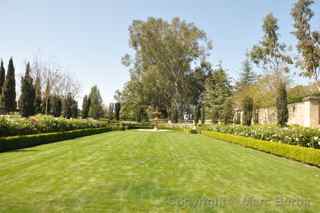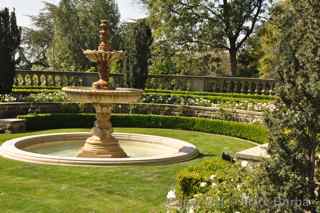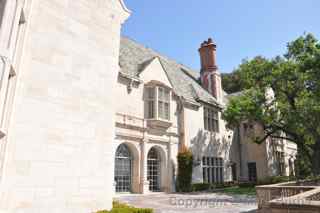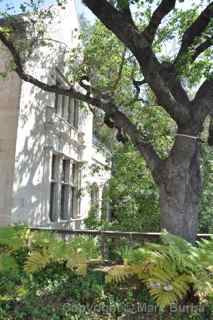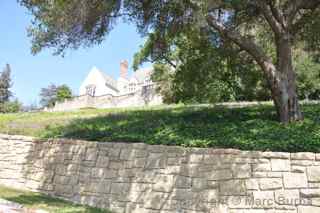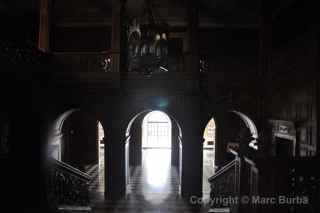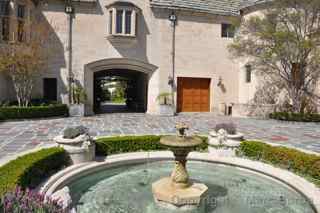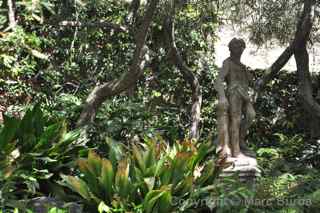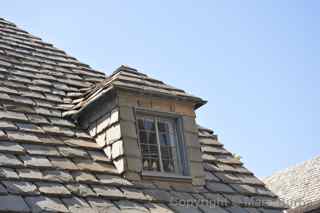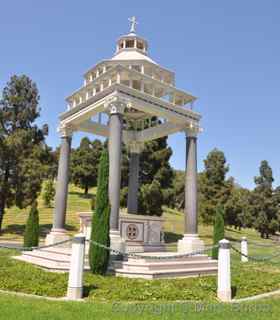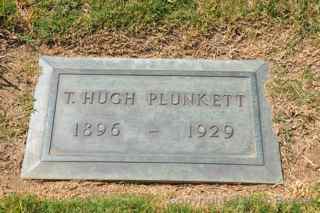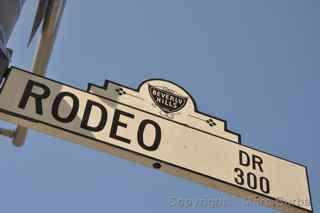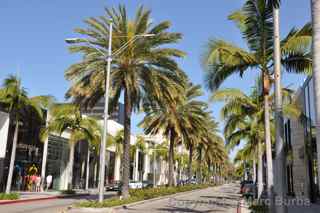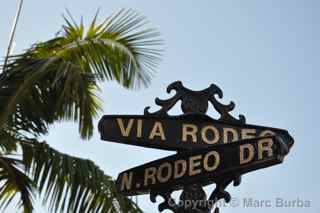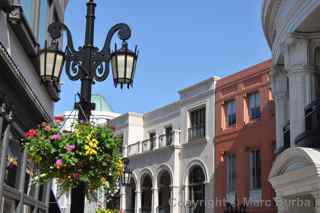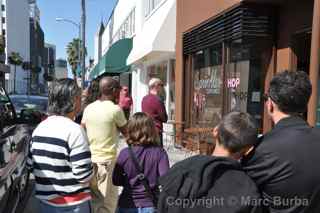Greystone Mansion, Beverly Hills, Calif.
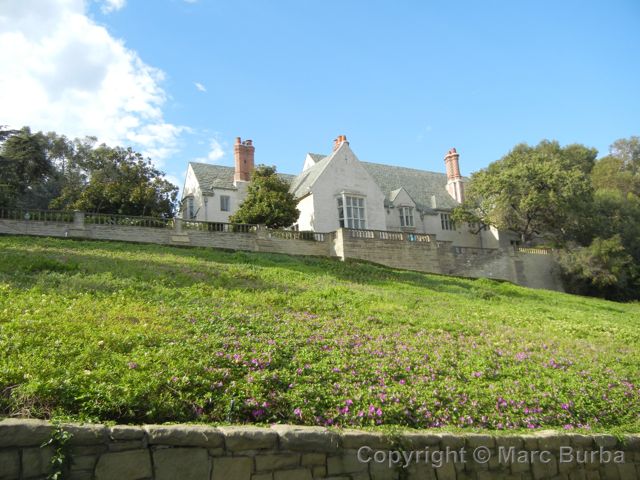 Poor Ned Doheny. He only got to live in his 46,000-square-foot, 55-room Beverly Hills mansion for five months before he was shot dead.
Poor Ned Doheny. He only got to live in his 46,000-square-foot, 55-room Beverly Hills mansion for five months before he was shot dead.
By his side in a downstairs guest bedroom was the body of Hugh Plunkett, his confidante and personal secretary. But what exactly happened on that February night in 1929? The official story is that the mentally unstable Plunkett shot Doheny, then killed himself. But it may have been a dispute over money. The men may have been more than friends. The shooter may actually have been Ned’s wife, Lucy. Add your own speculation here.
On this night, though, we are inside the hilltop mansion, witnessing the murder.
It’s actually the climactic scene of a play, but the play is loosely based on events that led to Doheny’s death — only the names, and the location of the crime, and maybe its motive, have been changed. But still, it was a compelling look inside the troubled lives of a wealthy family from a long-ago generation.
 Actress and playwright Kathrine Bates of Theatre 40 of Beverly Hills imagined the events that led to the men's deaths and turned it into “The Manor,” a two-act play with an intriguing concept: the audience is split into three groups, following the actors to watch scenes play out in different rooms. It’s an intimate setting, with the actors performing only a few feet from their guests. Only about 60 people attend each performance, occasionally joining in a central location for key drama. It’s a brilliant concept, and must be timed perfectly so there’s no interruption to the story flow. Even though each group watches scenes in a different order, it all fits together perfectly in the end.
Actress and playwright Kathrine Bates of Theatre 40 of Beverly Hills imagined the events that led to the men's deaths and turned it into “The Manor,” a two-act play with an intriguing concept: the audience is split into three groups, following the actors to watch scenes play out in different rooms. It’s an intimate setting, with the actors performing only a few feet from their guests. Only about 60 people attend each performance, occasionally joining in a central location for key drama. It’s a brilliant concept, and must be timed perfectly so there’s no interruption to the story flow. Even though each group watches scenes in a different order, it all fits together perfectly in the end.
Bates was one of the cast members on this night, playing the stepmother of the wealthy young husband.
A few months earlier, the first time I pressed my nose against one of the mansion’s windows, I figured it was as close as I’d ever get to descending its grand entry staircase or wandering its rooms. But the play was my ticket inside. Check the link to the Theatre 40 Web site for the latest schedule.
It’s only a glimpse inside the mansion and the lives of the people who inhabited it decades ago. We see only a few rooms of many, and only a few moments of complex lives. But any time in this place is worthwhile. After nightfall, looking out from the expansive windows over the glittering city below, we got to appreciate a few minutes of opulence.
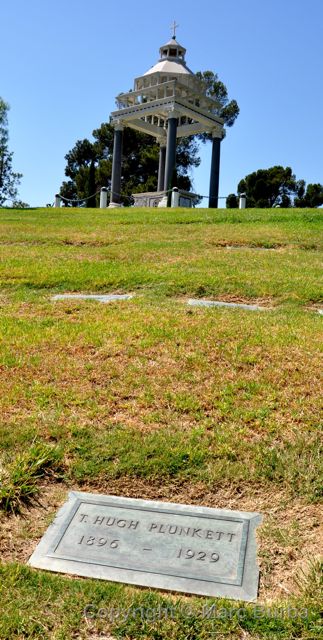 Doheny was the son of an oil baron; after his death, Lucy became administrator of his estate. Lucy and their five children remained at Greystone for another quarter century; she married again in 1932. She sold the mansion and its land in 1955, and it remained vacant for a decade. It was on the verge of demolition before the City of Beverly Hills purchased it.
Doheny was the son of an oil baron; after his death, Lucy became administrator of his estate. Lucy and their five children remained at Greystone for another quarter century; she married again in 1932. She sold the mansion and its land in 1955, and it remained vacant for a decade. It was on the verge of demolition before the City of Beverly Hills purchased it.
The property became a park in 1971, and the mansion was listed on the National Register of Historic Places five years later. Its renovation continues, and today it is often used as a filming location, and for weddings and special events. Though the manicured grounds are open to the public daily, most visitors don’t get to step inside.
So what about the real men who inspired the play, and whose lives ended in the mansion? They’re still close. And still unquestionably from different worlds.
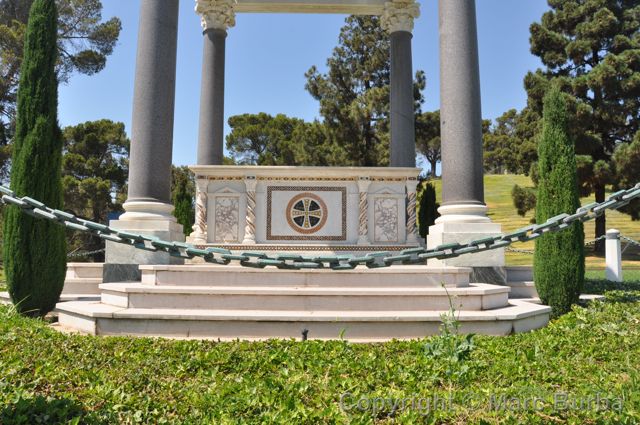 At the top of a hill at Forest Lawn-Glendale is the sarcophagus of Ned Doheny, under a gleaming monument of marble pillars supporting an ornate cupola. It is surrounded by landscaping and a low, thick chain that keeps visitors from getting too close. Six rows down the hill, but within sight, is Plunkett’s grave, adorned with only a simple flat marker, no different than any of the graves around him. Doheny was not given a Catholic burial, adding to the speculation about his death.
At the top of a hill at Forest Lawn-Glendale is the sarcophagus of Ned Doheny, under a gleaming monument of marble pillars supporting an ornate cupola. It is surrounded by landscaping and a low, thick chain that keeps visitors from getting too close. Six rows down the hill, but within sight, is Plunkett’s grave, adorned with only a simple flat marker, no different than any of the graves around him. Doheny was not given a Catholic burial, adding to the speculation about his death.
And what about Lucy? She died in 1993, at age 100.



